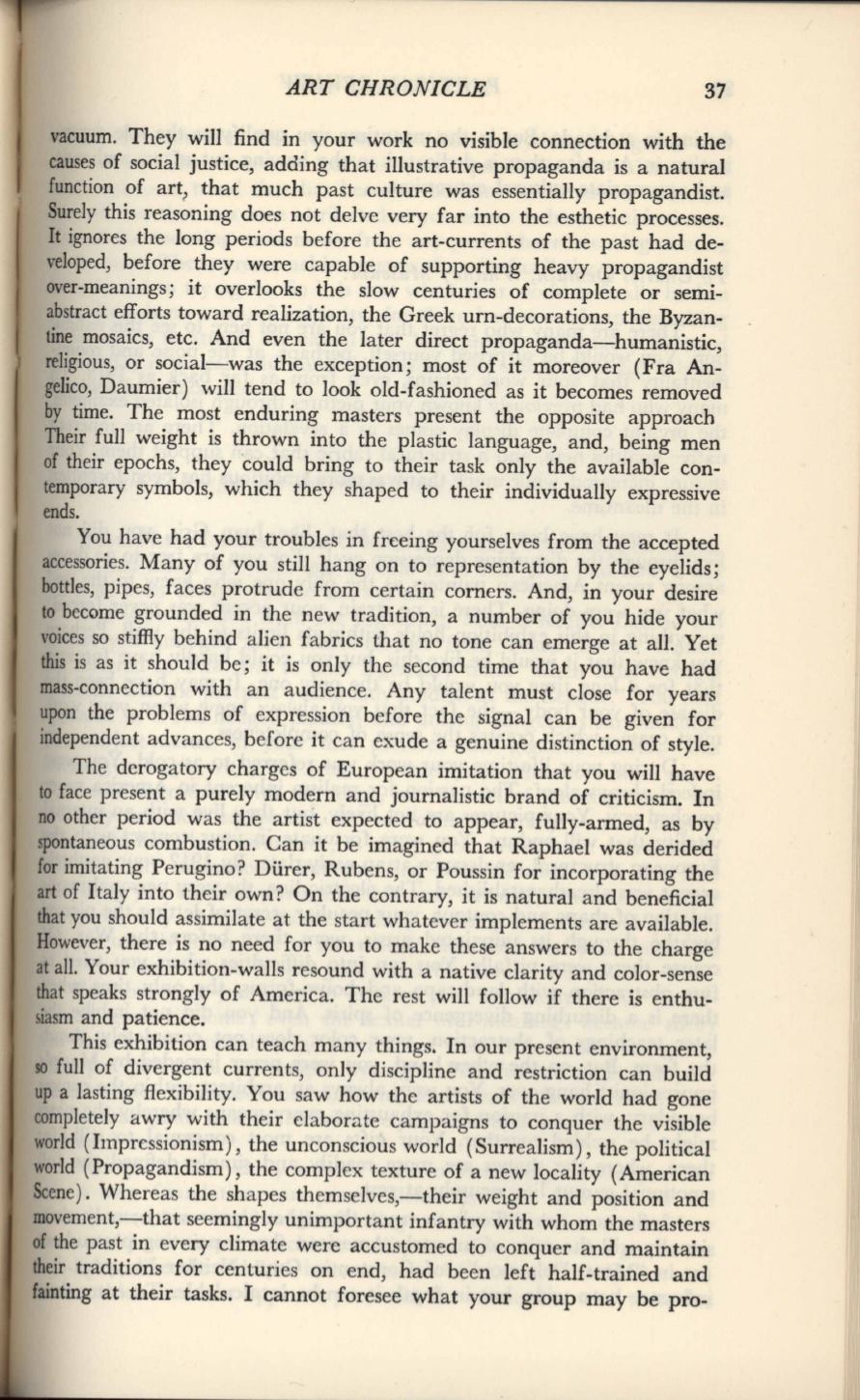
ART CHRONICLE
37
vacuum. They will find in your work no visible connection with the
causesof social justice, adding that illustrative propaganda is a natural
function of art, that much past culture was essentially propagandist.
Surely this reasoning does not delve very far into the esthetic processes.
It ignores the long periods before the art-currents of the past had de-
\'eloped, before they were capable of supporting heavy propagandist
over-meanings; it overlooks the slow centuries of complete or semi-
abstract efforts toward realization, the Greek urn-decorations,
the Byzan-
tine mosaics, etc. And even the later direct propaganda-humanistic,
religious, or social-was the exception; most of it moreover (Fra An-
gelico,Daumier) will tend to look old-fashioned as it becomes removed
by time. The most enduring masters present the opposite approach
Their full weight is thrown into the plastic language, and, being men
of their epochs, they could bring to their task only the available con-
temporary symbols, which they shaped to their individually expressive
ends.
You have had your troubles in freeing yourselves from the accepted
accessories.Many of you still hang on to representation by the eyelids;
bottles, pipes, faces protrude from certain corners. And, in your desire
to become grounded in the new tradition, a number of you hide your
voicesso
stiffly
behind alien fabrics that no tone can emerge at all. Yet
this is as it should be; it is only the second time that you have had
mass-connection with an audience.
Any talent must close for years
upon the problems of expression before the signal can be given for
independent advances, before it can exude a genuine distinction of style.
The derogatory charges of European imitation that you will have
to face present a purely modern and journalistic brand of criticism. In
no other period was the artist expected to appear, fully-armed,
as by
spontaneous combustion. Can it be imagined that Raphael was derided
for imitating Perugino? Durer, Rubens, or Poussin for incorporating the
art of Italy into their own? On the contrary, it is natural and beneficial
that you should assimilate at the start whatever implements are available.
However, there is no need for you to make these answers to the charge
at all. Your exhibition-walls resound with a native clarity and color-sense
that speaks strongly of America. The rest will follow if there is enthu-
Masmand patience.
This exhibition can teach many things. In our present environment,
10
full of divergent currents, only discipline and restriction can build
up a lasting flexibility. You saw how the artists of the world had gone
completely awry with their elaborate campaigns to conquer the visible
world (Impressionism),
the unconscious world (Surrealism),
the political
world (Propagandism),
the complex texture of a new locality (American
Scene). Whereas the shapes themselves,-their
weight and position and
movement,-that seemingly unimportant infantry with whom the masters
of the past in every climate were accustomed to conquer and maintain
their traditions for centuries on end, had been left half-trained and
fainting at their tasks. I cannot foresee what your group may be pro-


